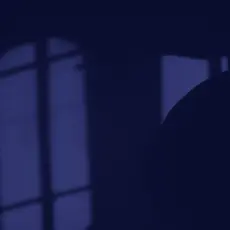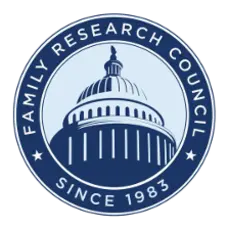I recall reading an Ann Coulter column several years ago which she dedicated to praising David Limbaugh's then-new book, "Persecution: How Liberals Are Waging War Against Christianity." Among the stories of "persecution" that Limbaugh highlighted, and which Coulter also highlighted in her column, was the story of Raymond Raines:
In a public school in St. Louis, a teacher spotted the suspect, fourth-grader Raymond Raines, bowing his head in prayer before lunch. The teacher stormed to Raymond's table, ordered him to stop immediately and sent him to the principal's office. The principal informed the young malefactor that praying was not allowed in school. When Raymond was again caught praying before meals on three separate occasions, he was segregated from other students, ridiculed in front of his classmates, and finally sentenced to a week's detention.
In turns out that back in 1994, Newt Gingrich and various Religious Right leaders had made Raymond's sorry tale the centerpiece of their campaign of Christian victimization, despite the fact that it was entirely untrue:
"These are not isolated examples," said Gary Bauer, a former Ronald Reagan Administration adviser who heads the Family Research Council. The American Civil Liberties Union "has convinced educators that they cannot allow any religious expression at school," he said.
These complaints of hostility toward religion have circulated widely in conservative and Christian evangelical groups in recent years. Now they are fueling a drive among some activists to draft a broad amendment to the Constitution that would go beyond voluntary school prayer.
...
"These school incidents are fueling the fire," said Jay Sekulow, counsel for Christian broadcaster Pat Robertson's American Center for Law and Justice.
Three weeks ago, Gingrich, in a television appearance, cited the St. Louis case as evidence that "it's illegal to pray," even privately, in schools today.
...
The St. Louis case concerned 10-year-old Raymond Raines who, his mother said, was given detention because he sought to pray over his lunch. When lawyers for the Rutherford Institute heard about the case, they filed a lawsuit against the principal and issued a press release denouncing the school system.
"I know it sounds bizarre, but we have substantial evidence to believe it happened," said Timothy Belz, the St. Louis lawyer working with the Rutherford Institute.
On NBC-TV's "Meet the Press," Gingrich described the situation as "a real case about a real child. Should it be possible for the government to punish you if you say grace over your lunch? That's what we used to think of Russian behavior when they were the Soviet Union."
But school officials said the incident never happened. Rather, they said, Raymond was disciplined for fighting in the cafeteria.
"I can tell you he was not reprimanded for praying," said Kenneth Brostron, the school's lawyer. "Do you think it makes sense that the teachers would look around the cafeteria and target the one student who was praying quietly at his seat?"
Why am I bringing this up? Well, because I have started seeing this story popping up on right-wing websites:
An 8-year-old boy has been suspended from school and forced to undergo a psychological evaluation after he drew a picture of Jesus Christ on the cross, his father claims.
A teacher at Lowell Maxham Elementary School in Taunton, Mass., allegedly said the second-grade student created a violent drawing, the Taunton Daily Gazette reported.
The boy's picture portrayed a crucified Jesus with Xs over his eyes to indicate that he had died on the cross.
The child's father, outraged at the school's action, asked to remain anonymous to protect his son. He said his boy drew the picture after returning from a family trip to see the Christmas display at the National Shrine of Our Lady of La Salette, a Christian retreat.
He said when the teacher asked students to draw something that reminded them of Christmas on Dec. 2, the boy recalled his trip and created a portrait of Christ on the cross.
"As far as I'm concerned, they're violating his religion," he told the newspaper.
Of course, the full story gives an entirely different perspective:
City officials sharply disputed yesterday widely distributed reports that a local elementary school suspended a second-grader and required the boy to undergo a psychological evaluation for drawing a picture of Jesus on the cross.
The story, initially reported by the local newspaper, raised questions of religious bias days before Christmas and was broadcast by local television stations and other news media. Making the story more compelling, the boy’s father held court for much of the day at his girlfriend’s apartment, granting interviews to reporters from Providence to Boston, demanding that the school district compensate him for his family’s pain and suffering.
“It hurts me that they did this to my kid,’’ Chester Johnson, the boy’s father, said in an interview with the Globe. “They can’t mess with our religion. They owe us a small lump sum for this.’’
But school officials say that the account in yesterday’s Taunton Daily Gazette was rife with errors and that the father’s description of what happened is untrue.
“The report is totally inaccurate,’’ Julie Hackett, superintendent of the Taunton public schools, said in an interview in her office yesterday. “The inaccuracies in the original media story have resulted in a great deal of criticism and scrutiny of the system that is unwarranted.’’
Hackett said the student, age 9, was never suspended and that neither he nor other students at the Maxham Elementary School were asked by the teacher to sketch something that reminded them of Christmas or any religious holiday, as the Gazette and other media reported and the father suggested, although his story changed as he explained it.
She said it was unclear whether the boy, who put his name above a stick figure portrait of Christ on the cross, had drawn the picture in school, which his teacher discovered Dec. 2.
“Religion had nothing to do with this at all, 100 percent nothing to do with it,’’ Hackett said, adding that Taunton is known as “The Christmas City.’’
She said the drawing was seen as a potential cry for help when the student identified himself, rather than Jesus, on the cross, which prompted the teacher to alert the school’s principal and staff psychologist. As a result, the boy underwent a psychological evaluation.
The right-wing myth regarding Raymond Raines was debunked back in 1994, but it was still being repeated by people like Coulter and Limbaugh nearly a decade later, and I suspect that we'll be hearing this story about a young student who suspended from school for drawing a picture of Jesus at Christmas for years to come.






